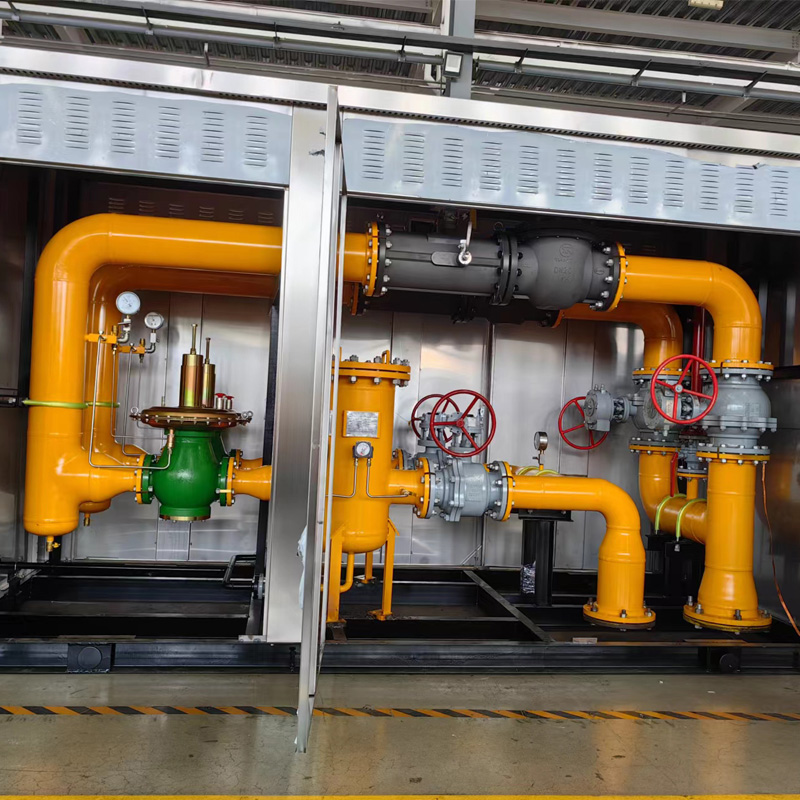
Dec . 25, 2024 06:53
Back to list
Pressure Regulator System Design for Optimal Performance and Efficiency
Understanding Pressure Regulation Mechanisms
Pressure regulation is a crucial aspect of various industrial and technological applications, controlling the flow and pressure of fluids in systems ranging from manufacturing processes to HVAC (heating, ventilation, and air conditioning) systems. The devices designed to maintain or control pressure within predetermined limits are known as pressure regulators or pressure relief valves. This article will explore the importance, types, functioning, and applications of pressure regulators.
Importance of Pressure Regulation
In many systems, maintaining appropriate pressure levels is essential for safety, efficiency, and functionality. For instance, excessive pressure can lead to system failures, leaks, or even explosions, posing serious risks to personnel and equipment. Conversely, too low pressure can cause operational inefficiencies and impair the performance of machinery. Therefore, pressure regulators play a vital role in ensuring a consistent and safe operational environment.
Types of Pressure Regulators
Pressure regulators can be classified into several types based on their design and operation
1. Single-stage Regulators These are typically used for low-pressure applications. They reduce the high inlet pressure to a lower outlet pressure in one step. While they are simple and cost-effective, they may not maintain a consistent output pressure if there are fluctuations in input pressure.
2. Two-stage Regulators These are designed for applications requiring precise pressure control over varying input pressures. In a two-stage regulator, the pressure is first reduced to an intermediate level, and then it is further decreased to the desired output pressure. This design enhances performance and stability.
3. Pressure Relief Valves Used mainly for safety, these valves automatically release excess pressure from a system when it reaches a preset level, preventing catastrophic failures.
.
How Pressure Regulators Work
منظم الضغط

At their core, pressure regulators utilize a combination of mechanical components to control fluid flow based on pressure variations. The main components of a typical pressure regulator include a diaphragm, spring, and a valve seat.
When the input pressure rises to the desired level, it acts on the diaphragm, causing it to move against the spring's resistance. This movement opens or closes the valve seat, adjusting the flow of fluid and maintaining the outlet pressure at the set point. If the outlet pressure falls below the desired level, the diaphragm allows more fluid to flow in, compensating for the drop and thereby stabilizing the pressure.
Applications of Pressure Regulators
Pressure regulators serve critical functions in numerous industries
- Gas Supply Systems In residential and commercial gas supplies, regulators are essential for ensuring that natural gas, propane, or other gases are delivered at safe and usable pressures.
- Medical Oxygen Delivery In healthcare, regulators control the pressure of oxygen delivered to patients, ensuring they receive the correct dosage without the risk of injury from high pressure.
- Hydraulic Systems In manufacturing and construction, hydraulic systems rely on pressure regulators to maintain optimal working pressures, ensuring efficiency and safety during operations.
- Food and Beverage Industry In food processing, pressure regulators are vital for maintaining the correct pressure during the production of carbonated beverages, ensuring product quality and safety.
Conclusion
In summary, pressure regulation is a fundamental component in various applications, ensuring safety and efficiency in fluid management. With various types of pressure regulators available, from single-stage to two-stage designs, industries can select the appropriate solution to meet their specific needs. Understanding the importance and functioning of pressure regulators not only enhances operational reliability but also contributes to the overall safety of systems that rely on precise pressure control. As industries continue to evolve, the role of effective pressure regulation will only become more critical.
Latest news
-
Safety Valve Spring-Loaded Design Overpressure ProtectionNewsJul.25,2025
-
Precision Voltage Regulator AC5 Accuracy Grade PerformanceNewsJul.25,2025
-
Natural Gas Pressure Regulating Skid Industrial Pipeline ApplicationsNewsJul.25,2025
-
Natural Gas Filter Stainless Steel Mesh Element DesignNewsJul.25,2025
-
Gas Pressure Regulator Valve Direct-Acting Spring-Loaded DesignNewsJul.25,2025
-
Decompression Equipment Multi-Stage Heat Exchange System DesignNewsJul.25,2025

